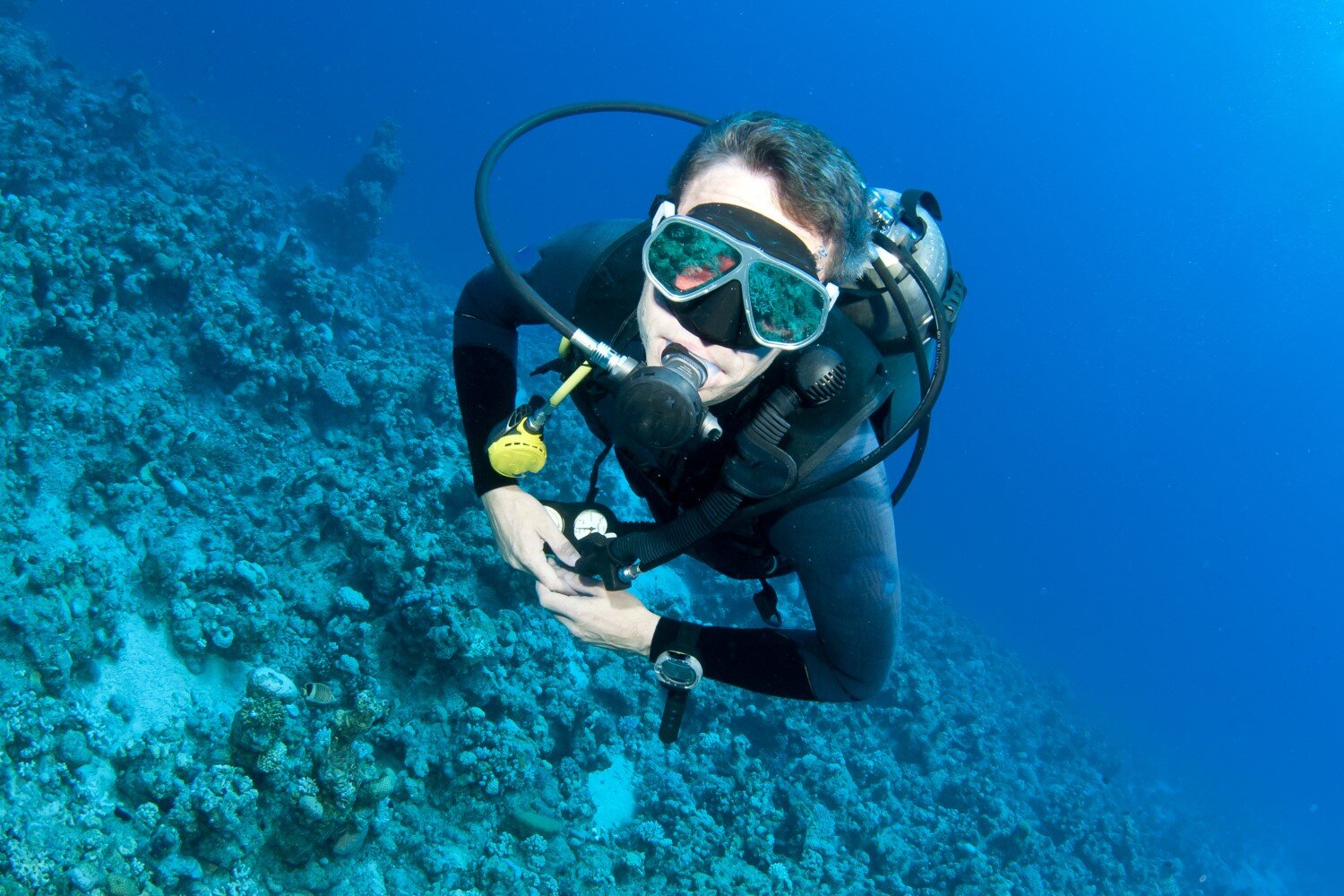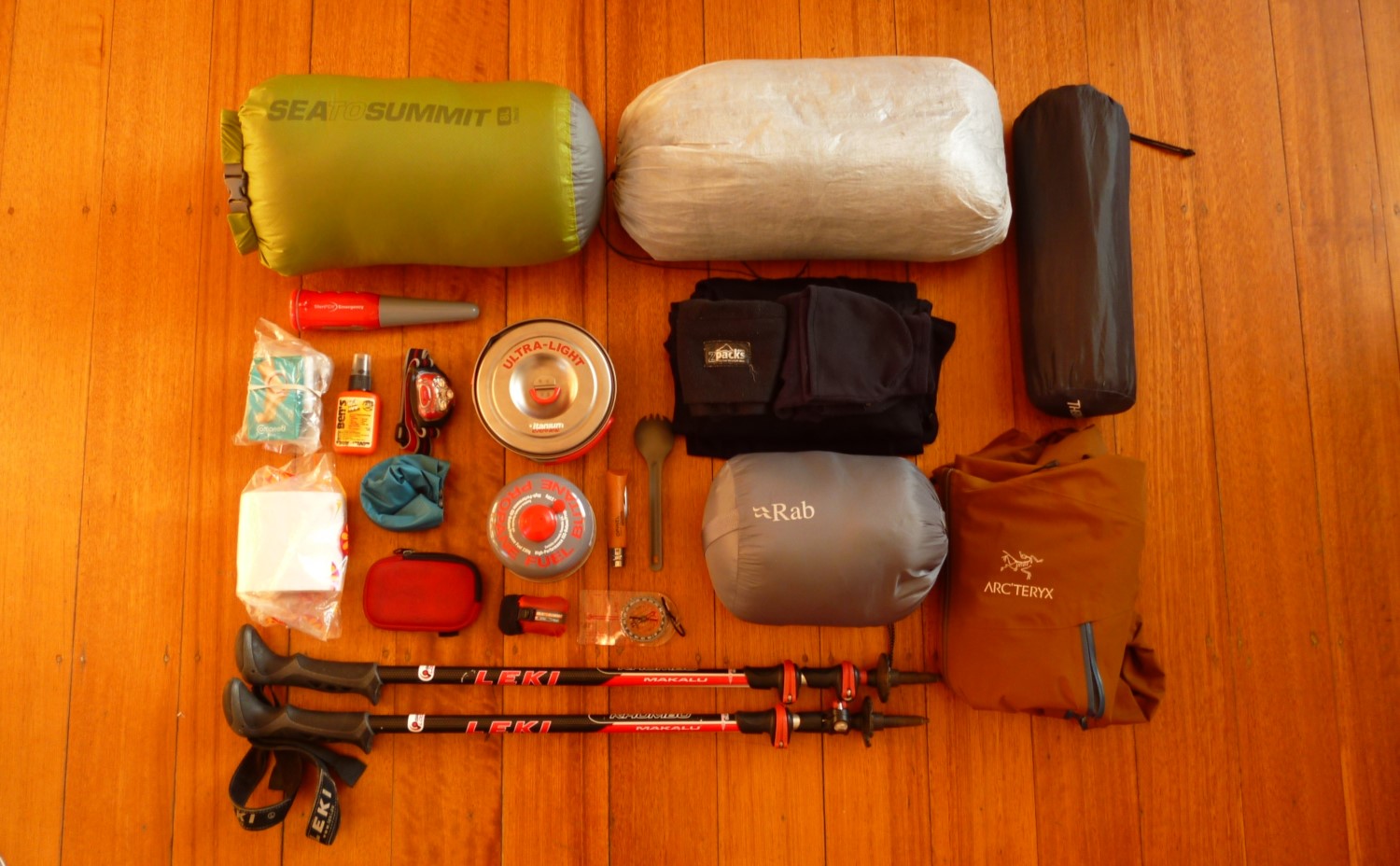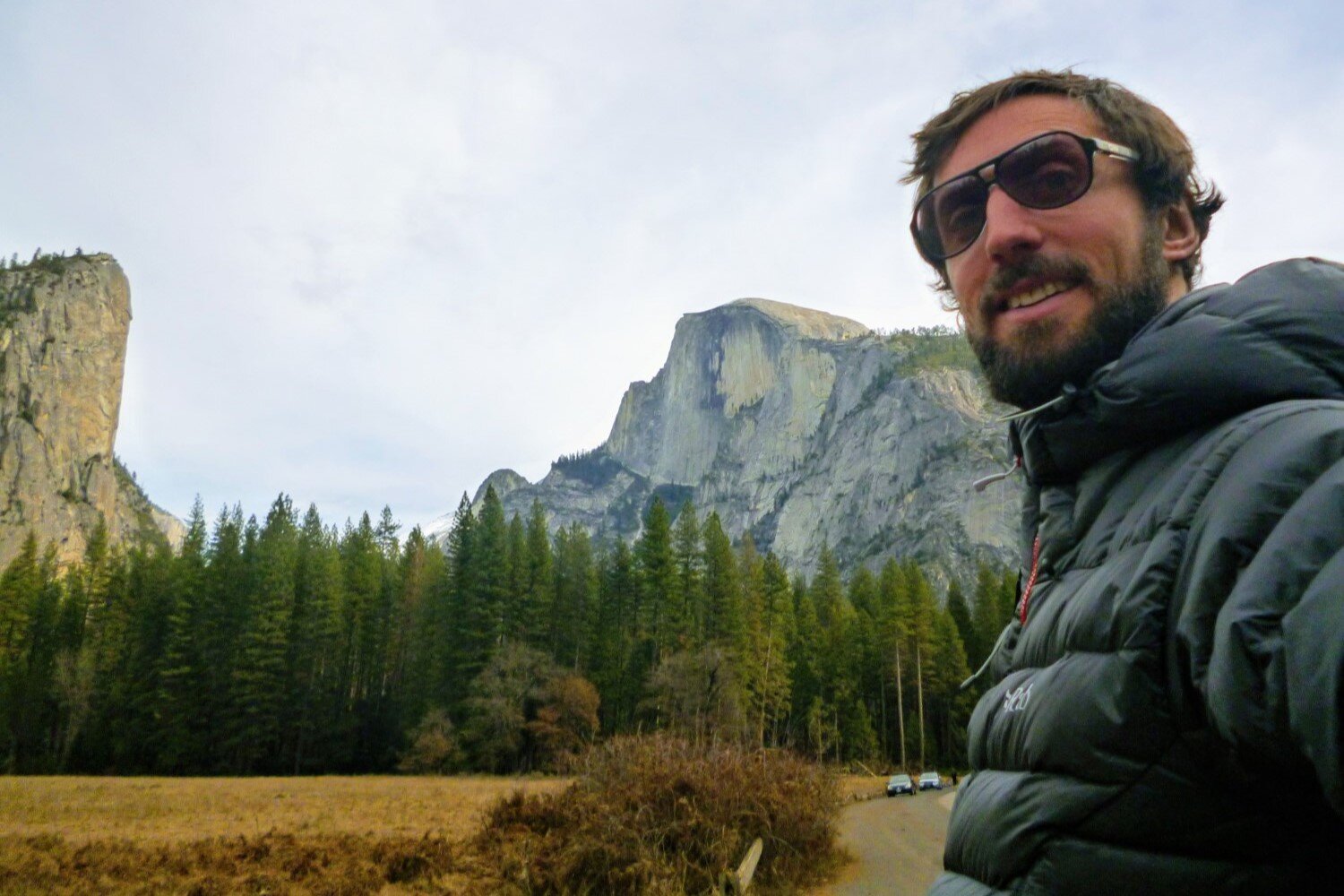Best Scuba Masks of 2023
JUMP TO: HOLLIS M1 / TUSA TM-5700 LIBERATOR PLUS / SCUBAPRO SYNERGY TWIN TRUFIT / AQUA LUNG TEKNIKA DOUBLE LENS DIVE MASK / CRESSI PANORAMIC / MARES X-VISION ULTRA LIQUIDSKIN / CRESSI F1 / BUYING ADVICE
Author: Rose Martin
The Short Version
Best Overall: Hollis M1
Best for Beginners: Tusa TM-5700 Liberator Plus
Best for Comfort: Scubapro Synergy Twin Trufit
Best for Durability: Aqua Lung Teknika Double Lens Dive Mask
Best Side Windows: Cressi Panoramic
Best Dual Window View: Mares X-Vision Ultra Liquidskin
Best on a Budget: Cressi F1
The Long Version
Scuba diving is a truly unique sport that lets you explore the realms of the underwater world up close and personal. You can sit back and watch aquatic animals go about their daily business, admire colorful coral reefs in all their glory, and even explore caves, lakes, and abandoned shipwrecks.
But key to all of this is a good scuba mask – after all, what’s the point in heading down to the depths if you can’t see anything while you’re there?
First up, you need to make sure your mask fits you properly, otherwise you’ll spend most of your dive distracted clearing out your mask. But it doesn’t stop there. Factors like where you like to dive, how often you travel, and how much time you’ve spent breathing bubbles all come into play when you’re shopping around for a new dive mask.
Ultimately, the choice of which mask is the right one for you will come down to personal preference – and be warned, it might take you a few tries to find ‘the one’.
To help you on your way to finding the perfect scuba mask, we’ve put together this list of the best scuba masks around. We’ve included quite a range, so hopefully you’ll be able to find the one that’s right for you!
If you love reading this review of the best scuba masks, then you'll likely love reading some of our other gear review pages:
Need To Know What To Look Out For?
Low volume or high? How many lenses do I need? What’s the benefit of frameless? If you find yourself asking these questions, then be sure to check out our buying advice at the bottom of the article!
Best Overall: HOLLIS M1
WINDOWS: 1
FRAME: No
VOLUME: Low
MATERIALS: Silicone, Saint-Gobain DIAMANT glass
SKIRT SEAL: Double feathered (narrow)
COST: $$
PROS: High-quality glass provides great optics, wide field of view, easy to clear, portable
CONS: Slightly expensive
The Hollis M1 has to be one of the most stylish diving masks out there – but that’s not the only reason we love it so much. Aside from its sleek, matte appearance, this frame offers awesome visibility thanks to its high-end glass lens.
The low iron content in the DIAMANT glass reduces distortion and that pesky green tint that you sometimes experience with budget masks at depth. Plus, it optimizes light transmittance, so you’ll experience vibrant colors even on cloudy days. On top of that, the single glass frame provides a wide field of view, so no exciting sightings will pass you by unnoticed.
It’s also super comfortable, and the double feathered seal is super soft and secure to stop any pesky leaks (it’s a popular choice among divers with stubble). The low volume and lack of frame make this an incredibly easy mask to clear, which is great if you’ll be demonstrating mask clearing skills to students. Plus, its supple nature means it packs away easily in your luggage and you can stash it in your BCD pocket if you want to use it as a spare (although we don’t see why it wouldn’t be your primary mask!).
Although this mask is popular among divers from around the world, it’s received particular praise for its performance in cold water thanks to its large buckles – you’ll have no problem readjusting the strap even with gloves on.
The main drawback of the Hollis M1 is it’s above-average price tag… but, if you can afford it, it’s definitely worth every penny.
Best for Beginners: TUSA TM-5700 LIBERATOR PLUS
WINDOWS: 2
FRAME: Yes
VOLUME: Medium
MATERIALS: Silicone, polycarbonate
SKIRT SEAL: Rounded double-feathered
PRICE: $
PROS: Economical, effective seal reduces leaks, easy to adjust strap, various colors
CONS: Not ideal for broad faces
The Tusa TM-5700 Liberator Plus is an awesome scuba mask that’s particularly well-suited to anyone who’s new to the world of diving.
This framed mask provides an extended field of view, which can help with any initial feelings of claustrophobia in the water, and the double feather skirt provides a comfortable yet highly effective seal (the last thing any new diver wants is a leaky mask, after all). Plus, the medium volume further reduces any claustrophobic feelings, yet masks clearing is still nice and easy.
One thing to bear in mind, however, is that this mask is better suited to narrower faces – if your face is broad you may find the space around the central forehead and nose a little tight.
The strap has been designed not to slip at all, but if you do need to make an adjustment in the water, you’ll find it super easy thanks to the extra-large buckles (even with gloves on).
Plus, we know that diving isn’t the cheapest hobby to get into, but at least this mask comes with a very reasonable price tag. Oh, and it’s available in heaps of colors too!
Best for Comfort: SCUBAPRO SYNERGY TWIN TRUFIT
WINDOWS: 2
FRAME: Yes
VOLUME: Low
MATERIALS: Silicone
SKIRT SEAL: Ribbed
COST: $$$
PROS: Unique skirt designed for comfort, fits most face types, good field of view despite frame
CONS: Expensive, frame limits portability
There’s nothing worse than wearing an uncomfortable mask during a dive – you’ll spend the whole time fiddling with it, it’ll probably end up leaking, and you might not even spot the whale shark that swam by you…
Fortunately, the Scubapro Synergy Twin Trufit is one of the comfiest masks you’ll ever wear thanks to the ‘Trufit’ skirt design that ensures both comfort and support.
The skirt surrounding the face is super soft and barely noticeable against the skin – yet it provides an awesome seal too thanks to its ribbed texture. But don’t worry – towards the frame, the skirt is thicker and is definitely rigid enough to hold things firmly in place. And despite the presence of a frame, this mask offers an awesome field of view, and you’ll hardly notice the frame in your peripheral vision compared to other framed masks.
Although the frame means you can’t squish this mask down as much as a frameless mask, there are quick-release buckles that attach the strap to the skirt, rather than the frame. This provides flexibility, again ensuring a comfortable fit, as well as letting you fold your mask flat for transport. On top of that, the interior volume has remained low, so clearing this mask will be super easy – although with a fit like this, we doubt you’ll be clearing it very often.
Overall, if you’re a fan of wearing gear that you’ll hardly know is there (and let’s face it, who isn’t?), then you’re going to love this mask – although you might not like the price so much.
Best for Durability: AQUA LUNG TEKNIKA DOUBLE LENS
WINDOWS: 2
FRAME: Yes
VOLUME: Low
MATERIALS: Silicone, tempered glass
SKIRT SEAL: Natural
COST: $$
PROS: Shock absorbing frame, cold water-friendly, corrosion-resistant, folds flat
CONS: Frame limits portability, not the most stylish mask
The Aqua Lung Teknika Double Lens is an awesome dive mask for anyone who travels frequently, dives a lot, or needs a spare mask to add to their arsenal.
The frame of this mask has been designed to absorb shock on impact, so it can definitely handle being knocked around a bit on a boat or in your luggage. It’s also been constructed using high-end AISI 304 bolts and screws that are super durable as well as corrosion-resistant.
Although the frame of this mask reduces its portability slightly, at least the skirt and buckles of the mask fold down almost entirely flat. Plus, we love that the buckles are flexible to help ensure a super snug fit. The compact nature of this mask, combined with its durability, make this an awesome mask for traveling as well as for keeping in your BCD pocket as a spare (heaps of instructors have bought this mask for this reason!).
It’s also a popular mask among technical divers thanks to its robust, reliable construction, dual lenses, and large buttons that are easy to operate with gloves on.
It might not be the prettiest mask out there, and it’s somewhat chunky construction might not be for everyone, but if you want a mask that will stand the test of time, then look no further.
Best Side Windows: CRESSI PANORAMIC
WINDOWS: 3
FRAME: Yes
VOLUME: Low
MATERIALS: Hypoallergenic soft silicone, tempered glass
SKIRT SEAL: Liquid silicone
COST: $
PROS: Extended field of view, great value for money, beginner friendly
CONS: Side windows aren’t for everyone, frame limits portability
The Cressi Panoramic scuba mask, as the name suggests, offers an incredible panoramic field of view thanks to the use of side windows. Although you’ll mainly look out of the front window, the addition of dual side windows means you’ll be able to spot things in your peripheral vision that would otherwise pass by unnoticed – pretty neat huh?
This mask is also low volume and features a very soft nose, so both mask clearing and equalizing are a breeze. The soft construction, combined with a frameless, lightweight design, make this a super portable mask that’s great for traveling. What’s more, it’s very reasonably priced and comes with a snorkel included too, making it great value for money overall.
Side windows definitely take a bit of getting used to – the distortion will feel a little strange at first and they can be distracting. But, if you’re keen to give it a whirl, then what better way to try than with the economical Cressi Panoramic mask?
Best Dual Window View: MARES X-VISION ULTRA LIQUIDSKIN
WINDOWS: 2
FRAME: Yes
VOLUME: Low
MATERIALS: Soft and hard silicone, tempered glass
SKIRT SEAL: Double feathered
COST: $$
PROS: Great horizontal and vertical fields of view, folds well despite frame
CONS: Slightly odd appearance, mirrored lenses cost extra
If side windows aren’t your thing, but you want to max out on your field of view, then you should definitely check out the Mares X-Vision Ultra Liquidskin.
An upgrade of Mares’ previous, and much-loved, X-Vision mask, this model now boasts a 20% wider field of view. We also love that it’s not only constructed from durable tempered glass but is also available with mirrored lenses to reduce reflections and glare.
Like the previous model, this mask is low volume for easy clearing, and the soft nose area means equalizing is a doddle too. On top of that, this mask is lightweight and fairly squishy for a framed mask, so you can take it with you anywhere.
This model features a new and improved skirt constructed from a mixture of hard and soft silicone. This means that the mask has plenty of support and structure around the frame area, but it retains a soft feel against the skin for improved comfort. Plus, the skirt is attached directly to the buckles for super simple adjustment.
Despite featuring a bunch of high-end touches, this mask comes with a surprisingly reasonable price tag. Although it might appear a little odd at first, it’s this unusual shape that gives it such a broad field of view – so we think it’s totally worth the trade off.
Best on a Budget: CRESSI F1
WINDOWS: 1
FRAME: No
VOLUME: Low
MATERIALS: Silicone, single tempered glass
SKIRT SEAL: Double feathered
COST: $
PROS: Great value for money, easy to clear, portable, versatile
CONS: Not the best for big noses, slightly fiddly mask strap
And last, but by no means least on our list, is the Cressi F1 mask. This mask is an ideal choice for budget conscious divers of any level.
People new to diving will love the low volume and incredibly soft nose area that make mask clearing and equalizing a walk in the park. This squishy nature, combined with the double feathered skirt, provides the flexibility needed to conform to almost all face types, although people with especially large noses might struggle slightly. Plus, as well as being squishy, this mask is also ultra-lightweight, making it extremely travel-friendly and ideal for keeping in your BCD pocket.
Despite its cute appearance, this mask is surprisingly durable – many people purchase it when they first start diving and still have it with them five years down the line. Adjusting the straps underwater isn’t as easy as with some other masks, but once you’ve found your ‘sweet spot’ you’ll rarely have to alter it – the strap holds exceptionally well.
It might not be packed full of fancy features, but this is one of the most user-friendly, reliable masks I’ve ever come across – and it just happens to be extremely affordable too.
BUYING ADVICE FOR SCUBA MASKS
Fit
First and foremost, you need your scuba mask to fit you properly. Ideally, it’s best to try on a mask in store, rent one from your local dive center, or borrow one from a friend before you buy one. But this isn’t always possible, and these days, many of the best masks are only available online. So here are a few things to keep an eye on when you’re online shopping:
SIZE: It might seem obvious, but the easiest thing to do if your face is particularly broad or narrow is check the dimensions of the mask you’re looking at. Plus, some masks come in various models catered to different sized faces.
NOSE POCKET: If you have a large nose, then make sure the nose pocket of the mask you’re looking at is a decent size – if you’re looking at it and worrying that it’s too small, then it probably is. If you’re really struggling, you could always consider going for a full-faced mask instead.
FRAMES: Masks lacking frames are generally more flexible, which gives them leeway to mold to the shape of your face. If you have a slightly unusually shaped face, then a frameless mask could be the way to go.
Volume
LOW: Low volume masks have less air inside them than high volume masks. On the plus side, this makes them super easy to clear (because you don’t need to breathe out as much ‘fresh’ air to expel the air and water inside the mask).
They also create less drag because they don’t extend as far from your face – this is why freediving masks are always low volume masks. Also, because the mask sits closer to your face, you generally get a wider field of view with low volume masks compared to high volume masks.
HIGH: High volume masks have more air inside them, so they aren’t as easy to clear, they’ll create more drag when swimming, and your field of view will be slightly reduced compared to a low volume mask because the protruding frame will block some of your view. This protruding frame, however, has made them popular among some divers who like some separation between themselves and their gear (reducing the feeling of claustrophobia).
They also make some people feel more protected, and some people even prefer to view the underwater world through a slight border – ultimately, the choice will come down to personal preference (and don’t forget, you can always go in the middle with a medium volume mask too).
Windows
ONE: Single-lens masks have just one ‘window’ that stretches across the whole mask. Because the lenses aren’t separated by a center piece, people with prominent brow areas sometimes find these masks more comfortable. Plus, the lack of a center piece leaves your view wide open without obstruction.
TWO: Dual-lens masks feature two windows that are separated at the nose area. If you want a prescription mask, but each eye requires a different prescription, then a dual-lens mask is the only way to go.
THREE OR FOUR: Although not as common as one- and two-window masks, there are some masks out there with three or four windows. The additional windows are found at the side of the mask, and extend the wearer’s peripheral vision as well as letting more light in. However, they won’t eliminate blind spots completely, and the distortion makes some divers feel uneasy.
Construction
GLASS: Your typical scuba mask will be constructed from tempered glass, which is designed to absorb shock on impact and is relatively shatter proof. On top of that, some of the more expensive masks use tempered glass with special properties that can allow more light in, reduce distortion, and even prevent fogging.
LENS SHAPE: Most scuba masks feature fairly similar lens shapes (the classic rounded ‘window’), but there are some designs out there designed to maximize your field of view. For instance, lenses that extended downwards in a point are known as ‘teardrop’ lenses and they increase your view downwards. Similarly, the Mares X-Vision mask extends outwards at the top and bottom (in an X shape) to provide a broader field of view. These masks might not be as aesthetically pleasing as ordinary masks, but they will definitely boost your underwater visuals.
FRAMED VS FRAMELESS: A key feature of any scuba mask is whether it’s framed (with the lens sitting in a hard frame) or frameless (with a lens molded straight onto the skirt). Frameless masks sit closer to your face, so you’ll get a better field of view and the volume is lower, so they’re easier to equalize. The smaller size also means they create less drag which, combined with their low volume, is why they’re the go-to mask for freedivers. The lack of a rigid frame also means that they’re lightweight and flexible, so they’re easy to pack or pop in your BCD pocket.
Alternatively, framed masks are sturdier and can be taken apart for cleaning and maintenance. Some people also prefer to have a mask that sits further away from their face, so that they feel less claustrophobic, and this distance can also help with unusual face types. Personally, I’m a big fan of frameless masks, but it really is a matter of personal preference.
SKIRT SEAL: Although all mask skirts (the part that creates a ‘seal’ between your face and the environment) are constructed from silicone, the design varies considerably across different masks. Thinner skirts are generally more comfortable and will mold to the shape of your face more easily, but they’re more prone to tears than thicker skirts. Some modern masks even use dual skirt designed to ensure a solid seal as well as comfort, and others feature fancy textures to ensure your seal doesn’t slip.
Another thing to bear in mind is the skirt color – clear skirts allow more light in and can boost peripheral vision, but darker skirts reduce glare (so they tend to be popular among photographers).
BUCKLES AND STRAPS: If you’ll be using your mask in cold water, you’ll want one with big buckles that can be adjusted easily even with gloves on. Some buckles can even rotate slightly, which aids removal but also accommodates different facial structures.
The buckles on most framed masks now link to the skirt of the mask rather than the frame, so the buckles can be folded pretty much flat against the lens, making framed masks more portable than they used to be.
MORE INFORMATION
If you loved this gear review article, then you'll likely love reading our other gear-fiend related articles:






















